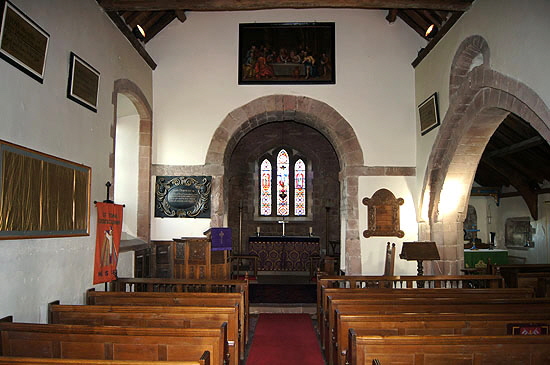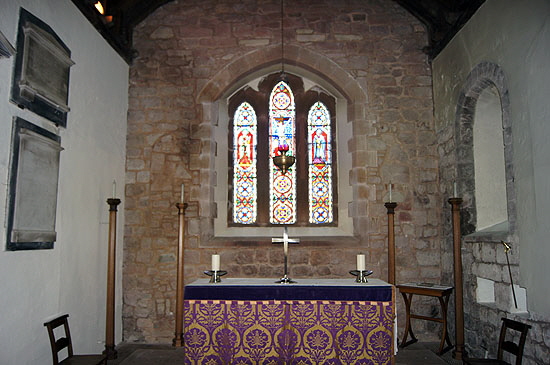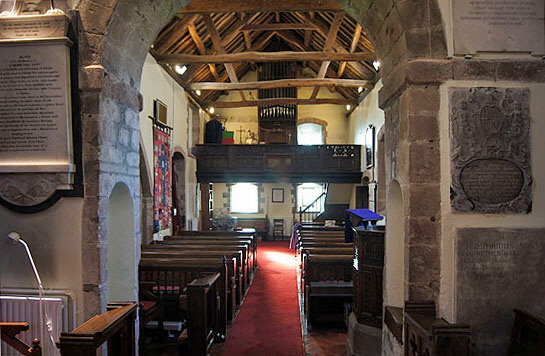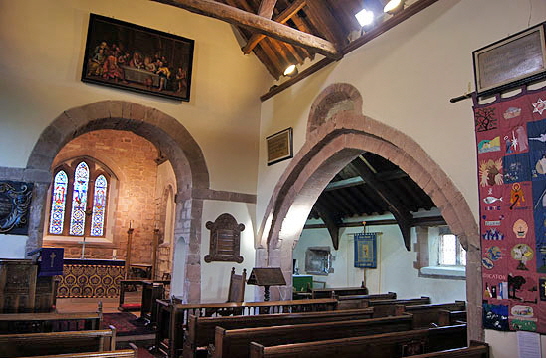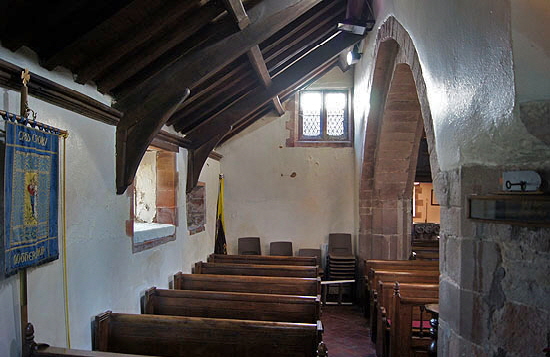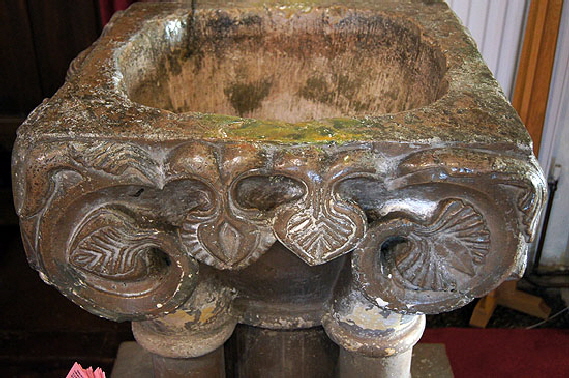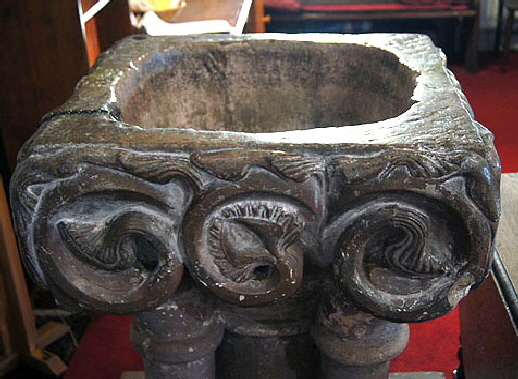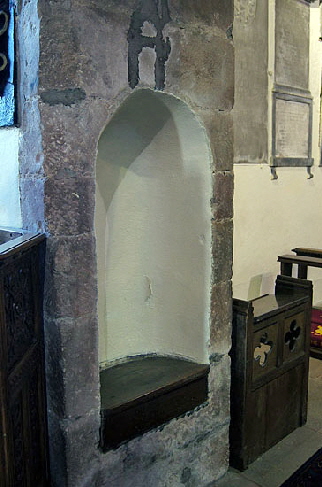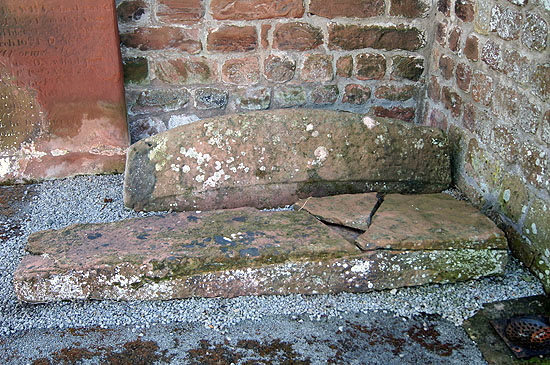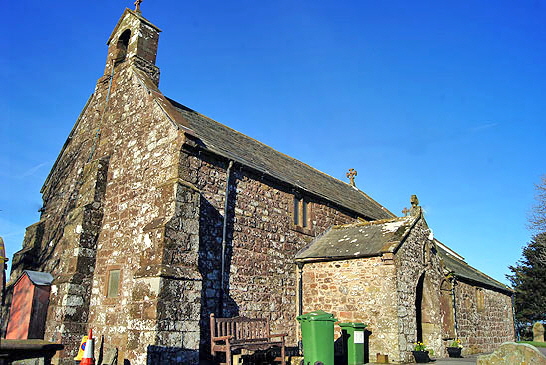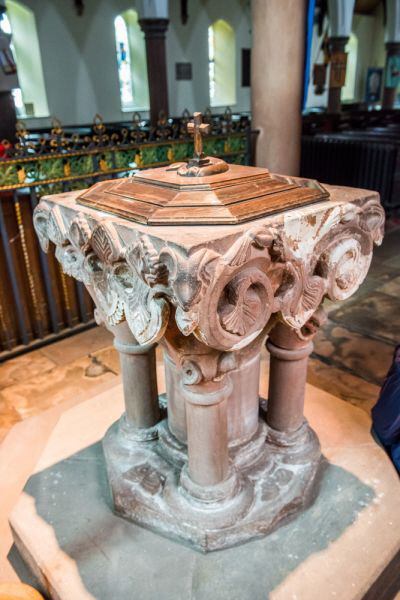|
I confess that I didn’t even notice on my first visit that the font was made of alabaster rather than of stone. It really is not obvious at all. Both Pevsner and the Carlisle Diocese website say that it is so I’m sure it’s a fact. I do not remember ever seeing a mediaeval alabaster font before so I did a bit of digging. As I suspected, it is vanishingly rare. I consulted the font collectors oracle - Francis Bond’s “Fonts and Font Covers” - and he has a section on materials other than stone. He mentions lead, pewter, gold, silver and brick - but not alabaster which does not even have an entry in the index. In fact I haven’t been able to unearth a single example anywhere - which is not to say there aren’t any but if there are then nobody is shouting it from the rooftops. I emphasise here that I am talking of pukka mediaeval fonts, not sixteenth century and later.
We are all used to seeing alabaster monuments in churches but these generally post-date the supposed date of Crosscanonby font by a century or two. Its use only became fairly common in the fourteenth century and I think it fair to say that it’s main use in churches has been for effigies of the great and the good and, therefore, the well-heeled. There is no shortage of stone in Cumbria, to put it mildly, so why on earth was alabaster used in this out of the way spot? Most monumental alabaster - “a hydrous sulphate of calcium” - in this country is found in Derbyshire, Nottinghamshire and Staffordshire in what are known as the Keuper beds and it’s darned expensive. That’s before you take into account the cost of transportation to Cumbria.
However, it turns out that alabaster was also found in Cumbria itself. There are remains of workings at a place called Barrowmouth which is close to Whitehaven on the Cumbrian coast. Whitehaven is just seventeen miles from Crosscanonby and most of the route could be by sea. Interestingly, there seems to be considerable vagueness about when it was operational. Certainly I have seen no source that suggests that alabaster or gypsum was being extracted as early as the thirteenth or fourteenth centuries. Yet it seems almost inconceivable that the alabaster at Crosscanonby came from anywhere else.With great economy, Pevsner noted that the Crosscanonby font was “C14 like Aspatria”. Why did he mention Aspatria? Well, Aspatria, whose church is considerably bigger, is only six miles away so that could have been the reason. Much more likely in my view, was that Pevsner was drawing attention to the stylistic similarity of the two fonts. Without saying so, he implies that Asptaria’s font too is of alabaster. Just to confuse us though he doesn’t mention it in Aspatria’s entry and then goes on to say “c13 (my italics) like the one at Crosscanonby...”. Thanks for all that Nicky, baby. It is, in fact, alabaster!
In 2023 I had the pleasure of meeting with Ray State, author of the monumental work “The Alabaster Carvers”. Ray’s local church is Ratcliffe-on-Soar in Nottinghamshire and it boasts several alabaster monuments and this prompted him to do an exhaustive study of the use of alabaster in English churches. Appendices list every known usage of the material, but he does not list the fonts at Crosscanonby or Aspatria. The “problem”, if that is the right word, is that they may well predate any other use of alabaster inside English churches. Ray awards “first use” to a thirteenth century monument at Dorchester-on-Thames in Oxfordshire. The first he can positively date is at Gloucester Cathedral between 1327-30. However. he acknowledges that alabaster was used on the decidedly Norman west doorway of Tutbury Church in Staffordshire.
We know, then, that alabaster was in use by church builders in England in the Norman period, albeit on what we might call an experimental basis. So the Crosscanonby and Aspatria fonts are not quite the aberration they might at first seem. However, there is no record of alabaster quarrying in Cumbria before the eighteenth century. We must counter this by saying that the lack of records from a twelfth century attempt at quarrying is hardly surprising. And alabaster can occur as outcrops or as part of cliffs that do not require extensive quarrying, although the blocks used here would be large by any standards. The Cumbrian alabaster deposits are near Workington. But we need to be careful. It is impossible to know where small uncommercial quantities might been found all those hundreds of years ago.
Ray State was sceptical about the dating of these fonts, feeling that a fourteenth century date would be much more plausible. To which I can only say “no way”! Both fonts with their extravagant foliate designs are stylistically capable as being dated to the thirteentth century, especially as it is reasonable to suggest that the extreme north west of England might have been a little behind in adopting new styles. If so, however, I would postulate them as very early thirteenth century. The Aspatria font has a huge grotesque animal figure, quite out of keeping with early Gothic style. I have seen 1160 suggested, The Corpus of Romanesque Architecture in Britain and Ireland believes, as do I, that both fonts were possibly carved by the same hand. They believe them to be late twelfth or early thirteenth century, according with my own view. Pevsner’s dating of the fourteenth century seems perverse and I can only assume that he was influenced by the contemporary view of when alabaster was first used in English churches.
I found a reference in the records of Holm Cultram Abbey - an important Cistercian house on the Solway Firth - this entry : “Alice de Romelye, daughter of William f. Duncan, in her widowhood grants to Holmcoltran a quarry in a field called Sandwath in Aspatric for building purposes, with right of way, three acres of her demesne in Aspatrik in Northcroft between the crofts formerly of Henry and of Geoffrey, and common pasture for ten oxen, ten cows, one bull, two horses and 40 (or in one MS. 60) sheep” Intriguingly, then, there was an extant quarry near Aspatria itself as early as 1223! What is more it was passed into ecclesiastical ownership. I have not been able to discover what was quarried there but it is near enough to the Workington keuper marl beds (where alabaster is found) to beg the question whether this was the source of the alabaster for the two fonts? We might postulate that a monastic establishment might have been better placed to commission such fine work. Again, though, it needs to be said that Crosscanonby is extremely close to another important monastic site at St Bees which is a coastal site. The mystery remains. Either way, as far as I can tell, these two fonts are the earliest uses of alabaster in English church furnishings. Which is very exciting!
|
